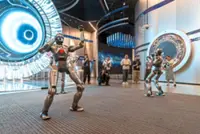Some of those efforts have been successful, at least partly. Others have ground to a halt, sending companies back to technology that is less sci-fi, but can be deployed more quickly and cost-effectively. — Photo by Possessed Photography on Unsplash
Robots are the future. In certain sectors, however, that’s not anytime soon.
Companies have been trying out automatons to serve food in restaurants, make home deliveries or do chores in stores, partly in hopes of easing the worker shortage. But some of those consumer-facing robots aren’t passing probation.
Already a subscriber? Log in
Save 30% OFF The Star Digital Access
Cancel anytime. Ad-free. Unlimited access with perks.





